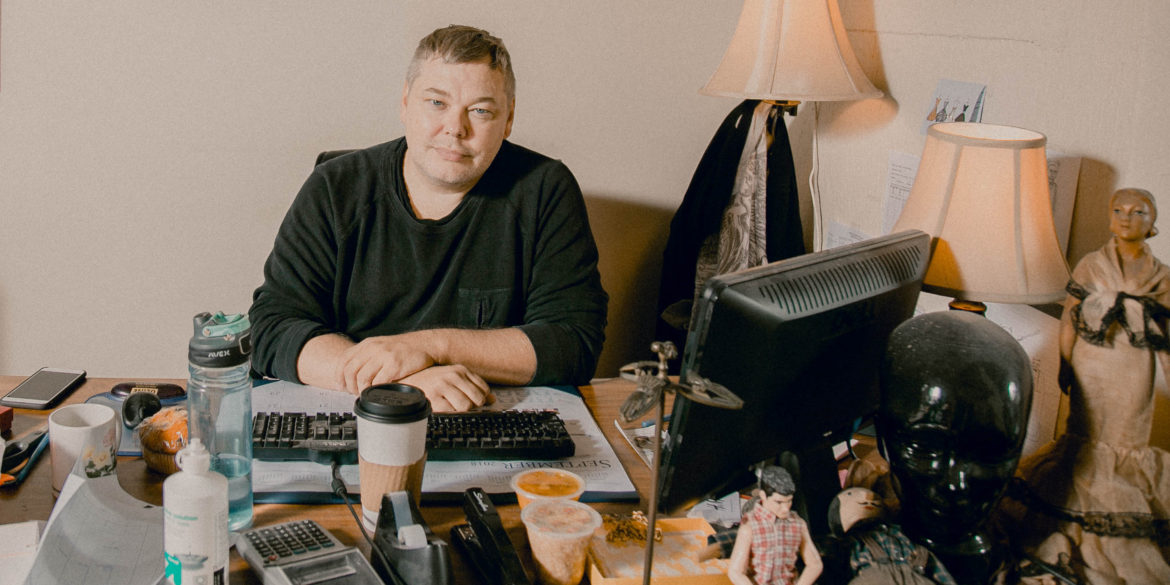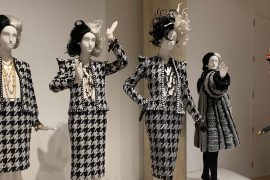Guy Clark is the costume shop manager for the Indiana Repertory Theatre, in addition to a costume designer. He was raised in Indiana and attended IRT performances growing up, but then worked in New York City for over ten years before returning to Indianapolis. He worked as a draper for the Broadway costuming company Parsons-Meares, creating costumes for Cats, Phantom of the Opera, and Lion King. He also assisted in making many dresses for Aretha Franklin, as well as designing a gown of his own for her. He attributes his career success and wide array of opportunities not to talent, but to simply being nice.
“When I first got to Parsons-Meares I was out of my depth,” he said. “I was really lucky that they hired me at a time when they were really busy and desperately needed hands. I wasn’t the most talented person in the room ever, but I also wasn’t a jerk, so they kept me around. Being nice will get you far in a career.”

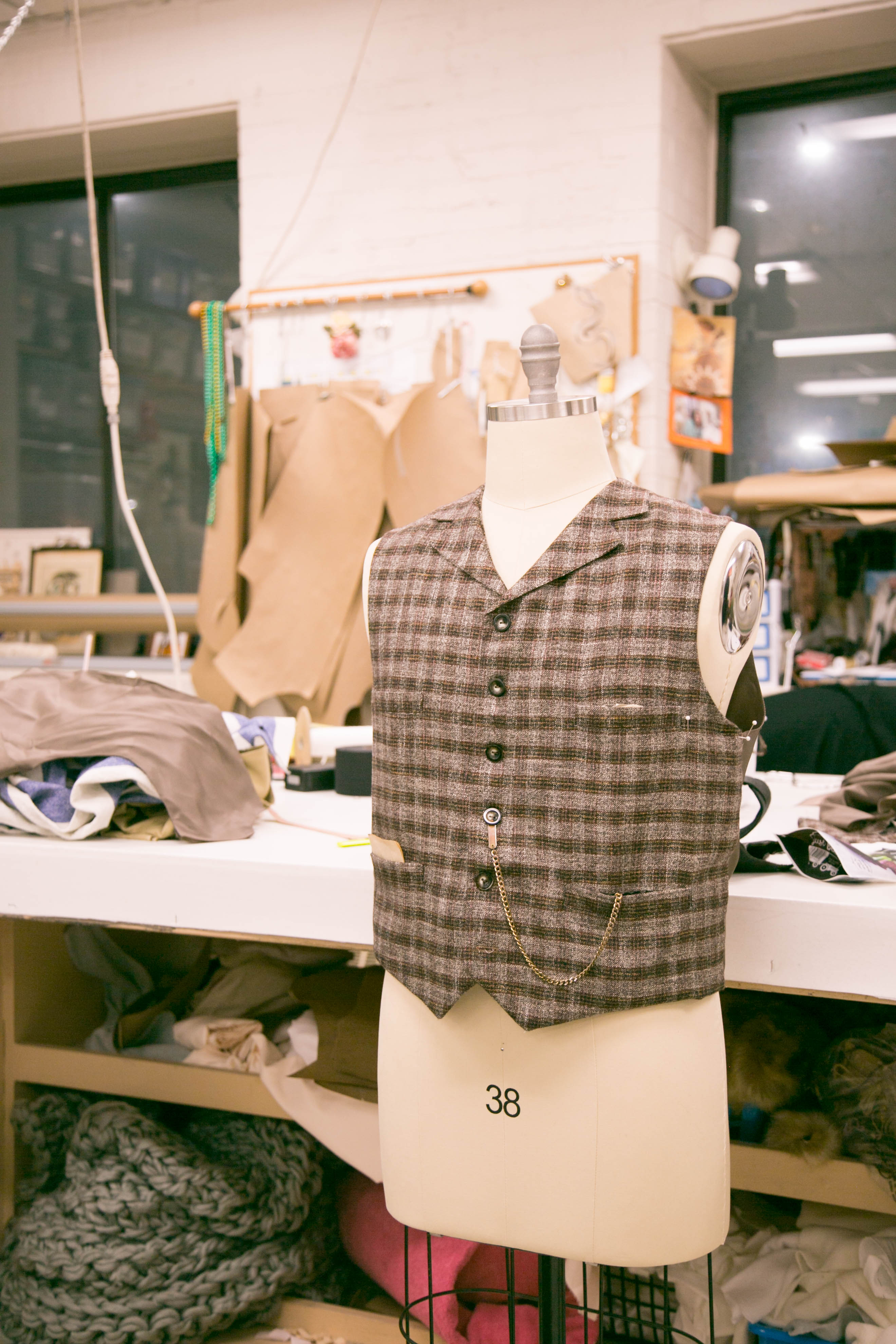
He learned a lot from his coworkers at Parsons and ended up working there for ten years in total, alongside famous designers and performers alike. With a job like this you’d assume Clark has a degree in costume design, but that’s not the case. He studied early childhood education and poetry in college, and credits his sewing skills to his grandmother who taught him as a child.
What started as a childhood hobby and a way to help out his high school theater program soon became his career and livelihood. And after working at Parsons-Meares, he landed another interesting sewing job: working on dresses for Aretha Franklin.
“We flew to Chicago, and we were knocking on a hotel room door, and this sleepy lady in a robe opens the door and it’s Aretha Franklin,” Clark said, recalling the first time he met Franklin. “We did the fitting and it was great, but it was still hard to believe.”
Clark said his experience working on costumes for Broadway shows helped him with his versatility, from draping theatrical costumes to helping with Franklin’s inaugural gown. As a result, he has experience making clothes for a wide variety of bodies.
“The Lion King has a lot of people who aren’t just skinny ballerinas, they’re big powerful singers. So I was very fortunate to have women who taught me, for someone this size you shape it this way, or shape it that way. I was always really conscientious of that,” he said.
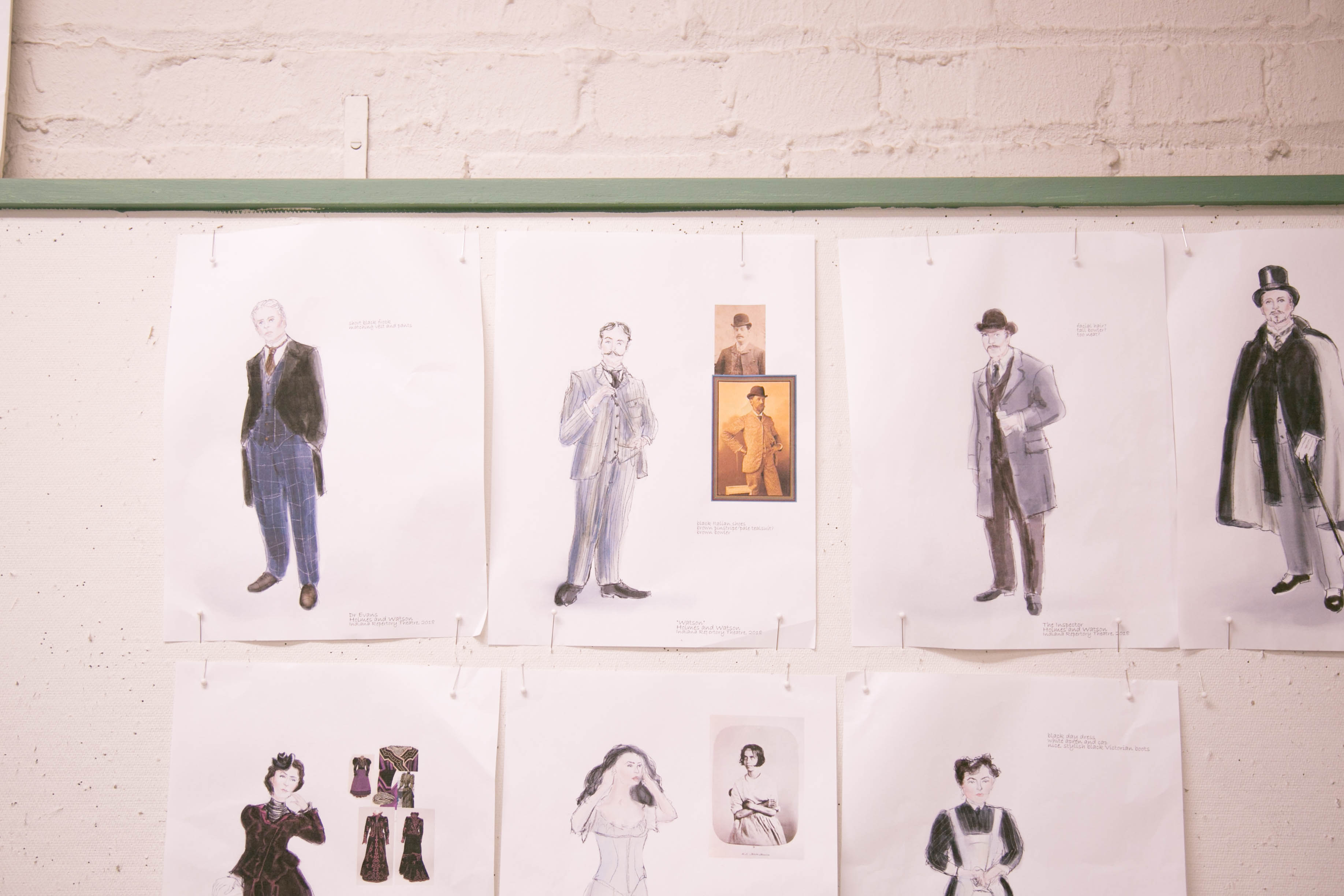
Clark eventually decided to move home to Indianapolis because he felt it had changed a lot, and he was also growing tired of the busyness of New York.
“New York is great if you have a great reason to be there, because it will always give you back what you put into it,” he said.
But as time went on he found himself feeling exhausted, and he had an urge to move home.
He was a draper at Indiana Repertory Theatre for two years upon returning to Indianapolis, and then became the costume shop manager. He says that Indiana’s art scene has grown since he was a child here, and now there are countless performing arts organizations and opportunities for collaboration. Clark frequently designs costumes for Dance Kaleidoscope, as well as Indianapolis Shakespeare company.
Regardless of what other projects he’s working on, his home base of the IRT always keeps him busy. While there’s no consistent day-to-day schedule because things are constantly changing in the costume shop, Clark and his coworkers usually begin a new show’s costumes by meeting with a designer and coming up with ideas.


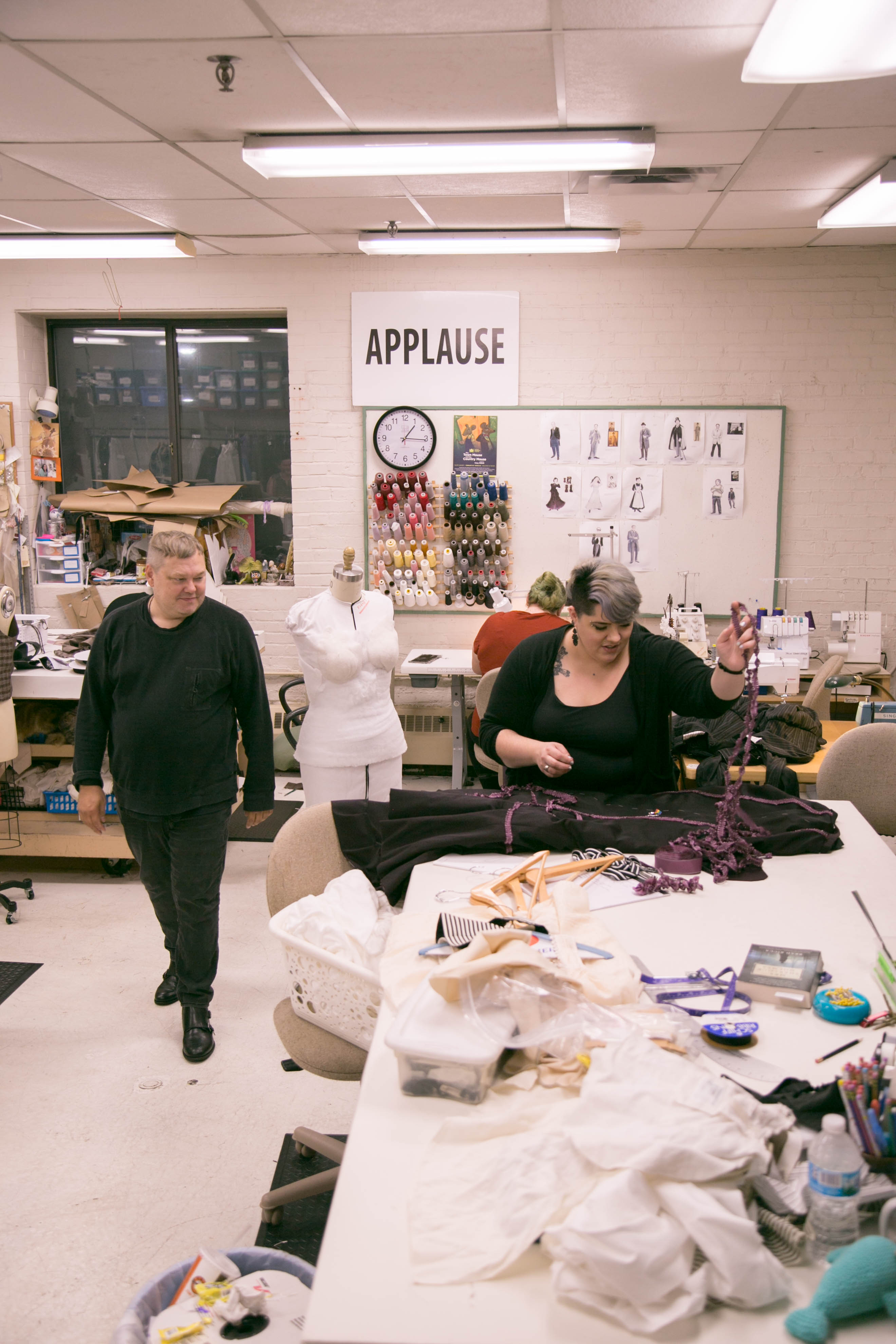
After that, the building begins. “In many ways, theater is one of the last places where close to true couture happens,” he said. “We make these costumes for the specific actors and actresses, we pad up the form to be their specific measurements, we drape in muslin to create that mock-up and have the brown paper pattern, we do fittings, and we find fabric.”
This kind of personalization is something that Clark likes about costume design in particular. With costume design, each piece of clothing is made to fit its individual character and context. But with fashion design for example, “you generally start with the dress and find the girl to fit it.”
Clark also likes that a career as a costume designer allows him to be fully engulfed in an arts community. He worries that many young people don’t think it’s possible to be an artist for a living, but he maintains that it is.
“I was lucky because I learned to sew, and that’s an art-adjacent skill,” he said. “So I say, learn how to do something that will pay your rent while you do your art, and then no one can tell you what to do. If you don’t have to rely on somebody else’s money, you don’t have to listen to anyone telling you: no, you can’t do that for a living.”
To see the costume shop’s work in action, and to see a whole cast of performers doing what they love for a living, check out IRT’s current performance of “Holmes and Watson.” The show is running from Sept. 25 to Oct. 21 and features modern stories inspired by Sherlock Holmes tales, as well as costumes by Devon Painter. For more information, visit irtlive.com.

